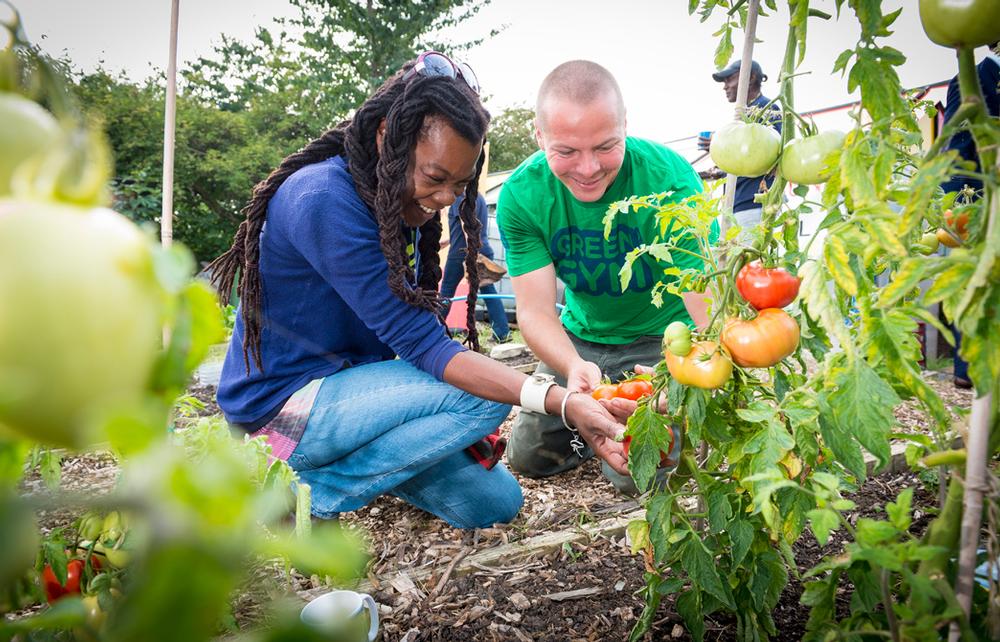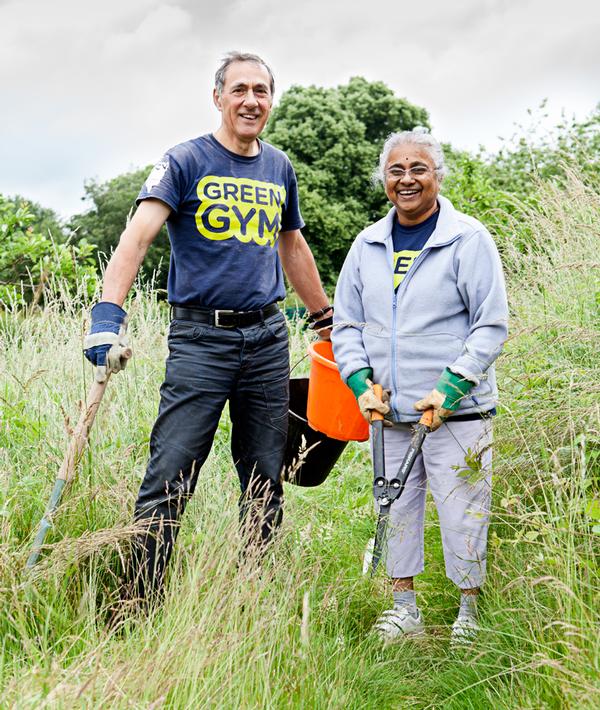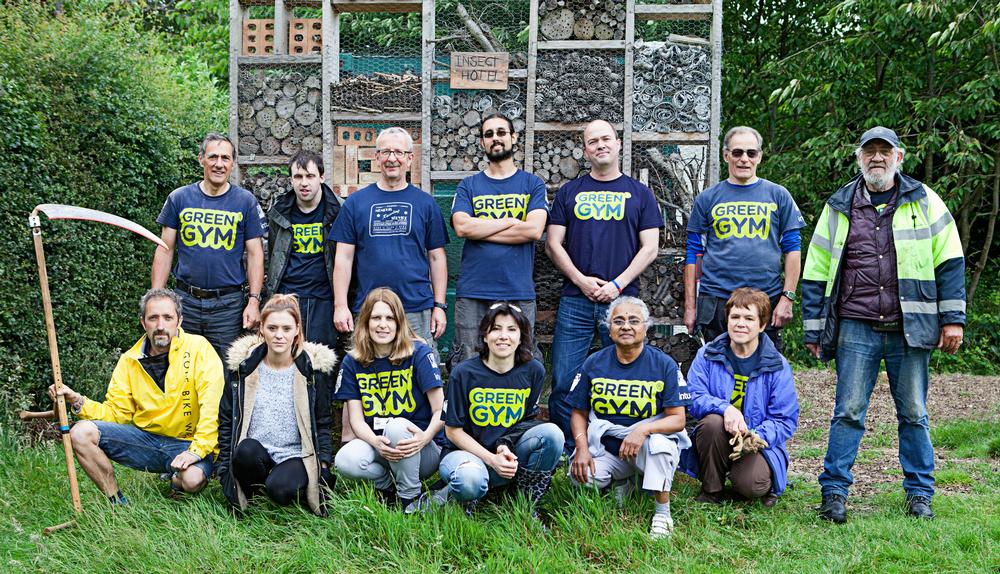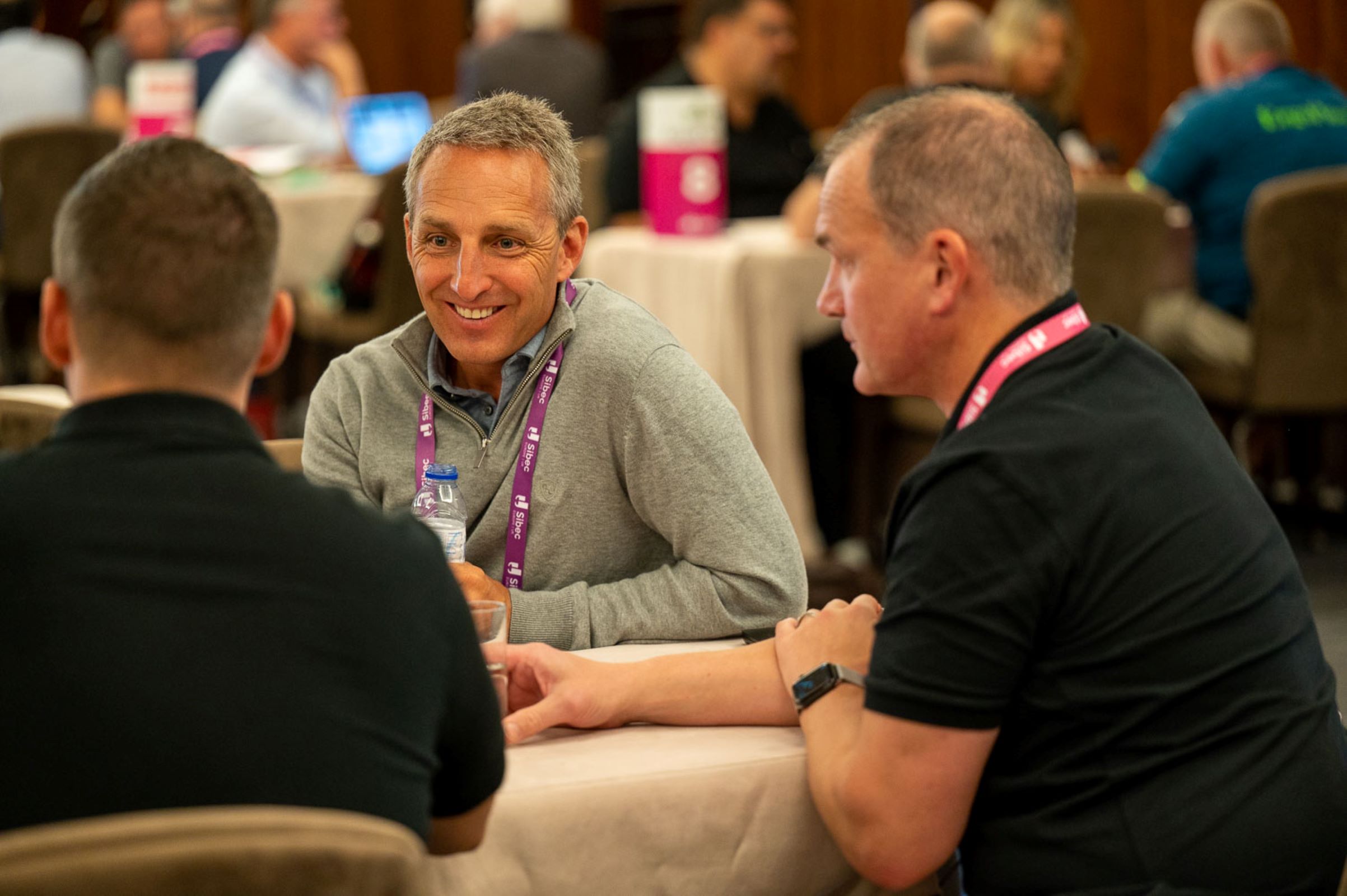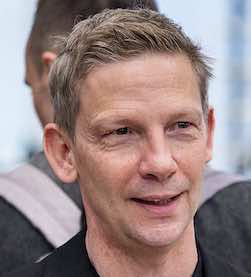features
Interview: Craig Lister
Green Gym harnesses the power of nature and physical activity to engage deconditioned and vulnerable people. MD Craig Lister tells Jak Phillips about the initiative’s ambitious five-year plan
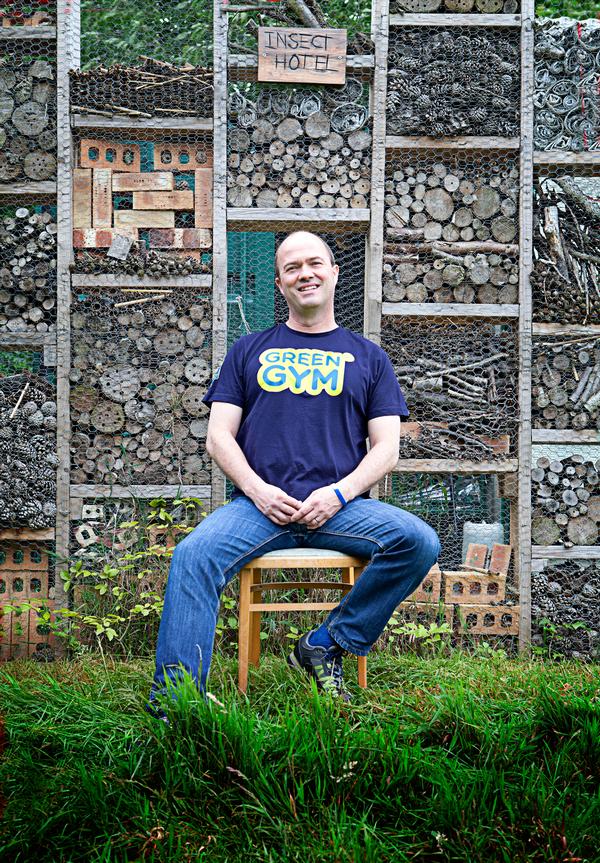
Delivering physical activity with a purpose. That’s the objective of conservation initiative Green Gym, which aims to improve the health and wellbeing of its participants – typically harder to reach demographics who may be experiencing joblessness, ill health due to their lifestyle, or have mental health conditions – by boosting their activity levels, reducing isolation and supporting better mental wellbeing.
Co-founded in 1998 by activity expert Dr William Bird (see also p10) with The Conservation Volunteers, Green Gym has steadily grown to reach 140 sites across the UK and last year won £475,000 in growth funding from Nesta and the Cabinet Office.
Having recently scooped a prestigious Health and Wellbeing Award from the Royal Society for Public Health, Green Gym organisers want to harness this momentum to reach 600 locations in the next five years, working with local authorities, GPs, leisure operators, schools and employers.
Green Gyms are a weekly activity, running for three to four hours at a community facility such as a park. Each Green Gym has up to 50 or 60 volunteers (the organisation’s name for participants), with turnout on any one week typically ranging from six to 20. Sessions include a specialised warm-up and cool-down, plus a wide range of gardening and land management activities. Intensity increases over time according to ability; volunteers may begin with light tasks like potting seedlings, later moving on to shifting gravel or digging.
We speak to Green Gym MD Craig Lister – a physiologist who has held senior roles in both the fitness and public health sectors with the likes of Public Health England and the NHS – about why a more rounded approach to wellness could be the key to successful long-term behaviour change.
What should we be doing to bring fitness and public health closer together?
My underpinning belief around public health is that we’ve moved too far down the evolutionary process. We evolved with physical activity being obligatory – for example, if you wanted to eat chicken, you would have to go and catch a chicken, which isn’t an easy task. Then you had to pluck the chicken, cook it, and only then did you get some calories. Now you can simply go to a fried chicken shop and get three times the calories with no calorie expenditure. We’ve moved from being frequently active to passive.
How can we reverse this and bring physical activity to the fore?
In the NHS, we remain very prescriptive and tend to give tablets for symptoms such as high blood pressure. But actually, in most cases, high blood pressure, poor blood cholesterol and obesity are all symptoms of lifestyle choice. You can medicate against some or all of those, but if the lifestyle choice doesn’t change, then the symptoms can become life-threatening cancers and conditions.
However, GPs don’t really have time to have those discussions with their patients. Meanwhile, Level 4 qualifications in the fitness industry are ensuring there are some very well qualified people in the sector now, so it’s in a good position to help.
Public health is all about managing the cause. People drinking fresh water was a very early example of public health, which reduced a whole range of conditions. Rather than treat people for the conditions associated with drinking dirty water, you make an effective intervention to tackle the cause. It’s the same with lifestyle conditions.
How has this shaped the guiding principles of Green Gym?
The Green Gym founder and practising GP Dr William Bird recognised these evolutionary and treatment issues. He realised the gym wouldn’t appeal to people with obesity issues and chronic back pain – you have to have a level of confidence to go to a gym, particularly these days – so he set out to create an alternative solution.
That alternative consisted of directing people to other activities that are much closer to what we’ve always done as the human species – gardening-type activities in parks and green spaces, which we call physical activity with a purpose. Rather than running on a moving belt or cycling on a bike that doesn’t go anywhere, you do some physical activity and achieve a tangible outcome.
What does a Green Gym session look like?
We get people together for three to four hours once a week. Participants will do a structured warm-up, like you might see in a gym but pertinent to the activities that are about to take place.
For the activities, we use only manual tools – no power tools – which is considerably harder work than you might expect. Try digging for 20 minutes, or hoeing, and you’ll appreciate the workout this gives. People work for about an hour and then we have a tea break and talk about stuff – that’s a very important part of the session.
We then go back to work, but people can now increase or decrease their workload depending on how they feel. Then we do a structured cool-down and people go on their way.
What are the benefits compared to a more conventional workout?
At the end of an activity – maybe it’s digging a new path or planting – participants step back and something’s changed. There are trees planted where there weren’t trees before. There’s now a path where once there were weeds and litter. You get immediate visual feedback. Not only that, but you’ve done it with a group of people you didn’t know before. You start to get a serotonin response, a dopamine response – feelings of satisfaction and achievement.
How important is the social aspect of a Green Gym?
It’s all about social cohesion. We create strong, resilient communities where before these didn’t exist.
We seem to disproportionately attract people with mild to moderate mental health challenges, people who are lonely and isolated, people who might have not had a job for a long time or with mild learning difficulties. A key thing for us is creating a non-judgemental environment.
You don’t wear a uniform and don’t have to buy gym kit or trainers, which for a lot of people are prohibitively expensive. You wear whatever you want to wear. But also you’re in the middle of a park, so you can walk away at any point if you want to – there’s no threat, no enclosed space where you might feel trapped.
But more than anything else, that space which wasn’t being used by the community because it was overgrown or full of litter is now a pleasant place for the whole community to enjoy.
What does it take to set up a Green Gym?
We pull people together into a green space through posters and social media advertising. Each Green Gym is led by a trained officer, who will typically be experienced in managing green spaces, with horticultural and environmental qualifications.
Typically somebody – a local authority, for example, or public health or private organisation – would commission a Green Gym for two years and we then run it once a week for two years; we focus on environmental work around an annual cycle, so two years is two annual cycles. We upskill the volunteers during that time so, by the third year, we tend to step away and the volunteers set themselves up as a non-constituted group. They take on a licence from Green Gym, which costs £2,000 a year. For this we offer training, data collection and reporting. In some places, we have Green Gyms that have run themselves for more than 10 years.
How are the gyms funded?
Green Gyms are free for the user: whoever commissions us pays us, so to the user it’s free.
In terms of the cost of a Green Gym, the standard model costs £30,000 a year for two years. Each Green Gym has a leader who we employ: they create a management programme for the land, because they’re not just planting trees and managing ponds but also ensuring biodiversity, enabling more animals, insects, birds and frogs to thrive.
That runs for two years and during that time we gather data, we train lots of people, we put quality standards in place. We also procure all the tools, which is quite an expensive process to get the quantity we need.
How can leisure and fitness operators collaborate with Green Gyms?
Leisure centres are excellent facilities and we’re eager to increase our collaboration in this area, particularly around exercise referral. Leisure centres are at the heart of communities, with parking around them, so we’re very much looking to develop that.
We’re looking to work with Sport England to introduce a certain number of our people into sport – not everyone, but a certain group. We also believe that using fitness instructors to measure the fitness of our volunteers would be much more effective than using our own volunteer leaders – firstly because the fitness instructors are qualified to do that, but secondly it doesn’t damage the relationship between our volunteer leaders and our volunteers, which becomes quite a trusting relationship.
Are you working with any operators on exercise referral schemes at the moment?
We’re working in Camden and Islington, and we’re going to start working with Aquaterra to have Green Gyms as part of the exercise referral scheme there. The exercise referral options will be to go to the gym, go on a walking programme, or go to a Green Gym.
We also have three Green Gyms at Queen Elizabeth Hospital in Birmingham – actually on the hospital site – so people come straight out of some of the mental health and musculoskeletal programmes into the Green Gym. We’re also talking to some CCGs now, and in fact yesterday we were talking to a GP federation group.
Green Gym is all about lifestyle change and what we find is, after a while, people actually start doing a bit more gardening in their own homes and they tell other people about that, which helps to pull more people in.
Evidence is key to exercise referrals. How do you go about tracking the fitness progress of Green Gym volunteers?
We have two specialist researchers – Joy and Natasha. Joy is a quantitative specialist and Natasha is a qualitative specialist. As we scale up, we’re looking to gather more evidence. We already have good evidence in terms of the mental health benefits, but the challenge we have is measuring changes in physical activity in real time – not self-reported, but direct measurement – because obviously we’re in the middle of a field or a park, and the people who run the Green Gyms aren’t exercise professionals or physiologists. We’re therefore talking to fitness suppliers about gathering data in the field through wearable tech, for example.
We’re also potentially going to be working with some GP practices, which will take measurements like blood pressure, blood cholesterol and blood glucose before and after we deliver a Green Gym cycle.
We’ll need a reasonably large sample size to be able to say the Green Gym is the cause of any positive change, but there’s a lot of interest in this because the cost of delivering Green Gym sessions is considerably lower than the cost of having people on drugs.
What are your long-term ambitions?
At the moment we have about 140 Green Gyms in England, Scotland and Northern Ireland.
My four colleagues and I are funded by Nesta and the Cabinet Office, because the social return on investment in Green Gym has been assessed by the New Economics Foundation to be £4.02 to every £1.00 invested. Nesta has recognised this and wants us to scale up Green Gyms, so my job as MD is to guide us past 500 Green Gyms in the next two to four years, by working with other groups such as CCGs, hospital trusts, local authorities and leisure operators.
Our long-term goal is to have a Green Gym within reasonable travelling distance of everyone in the country, Effectively we’d like to become the biggest gym chain in the UK – and it wouldn’t cost people anything to join.
